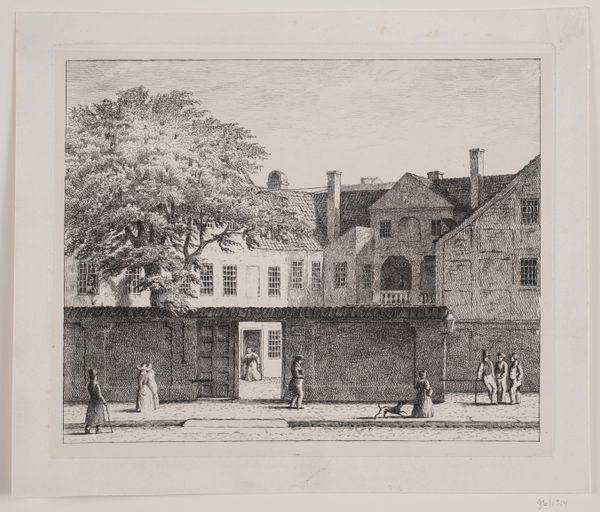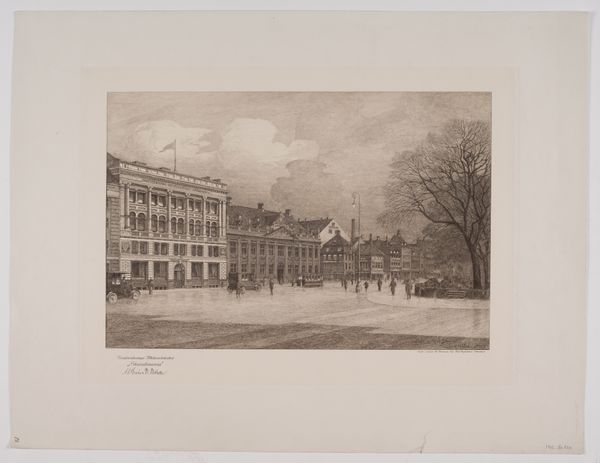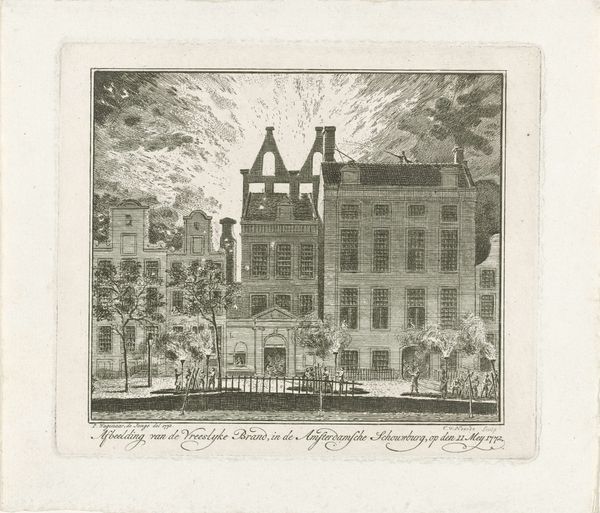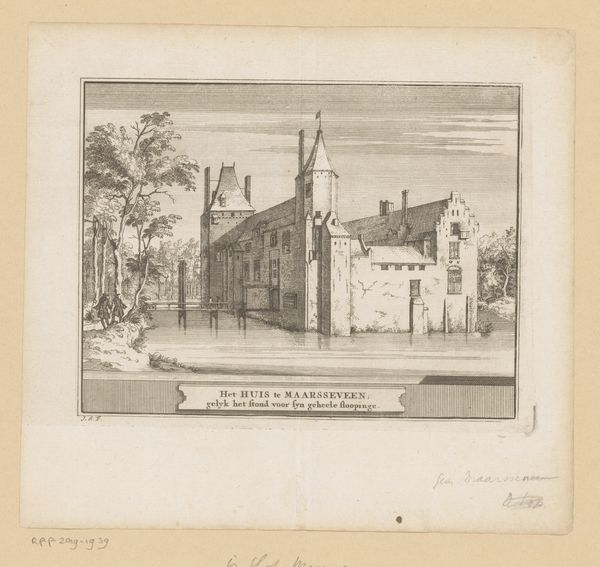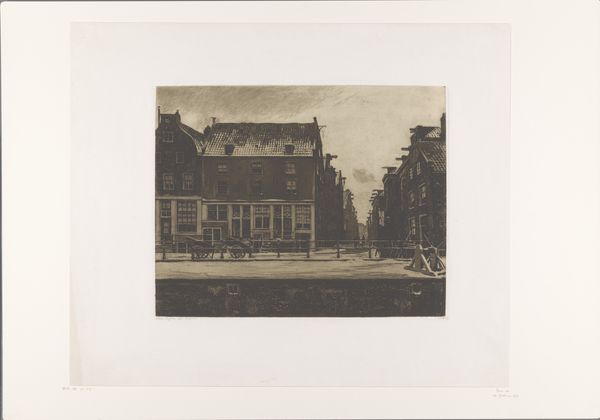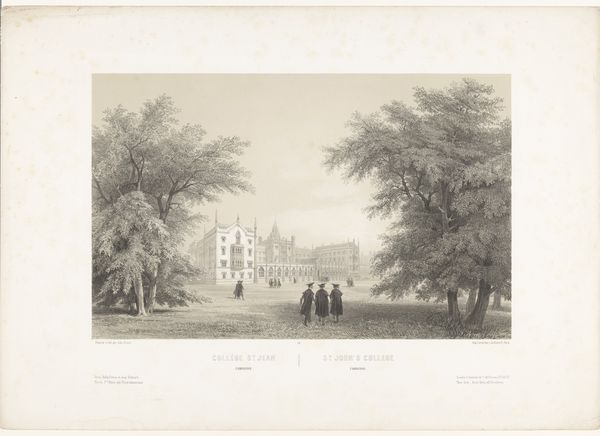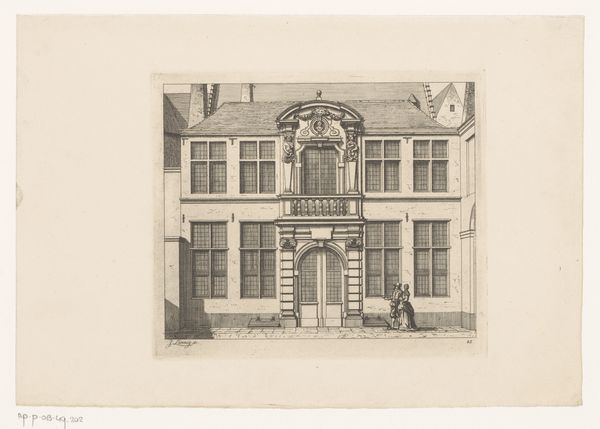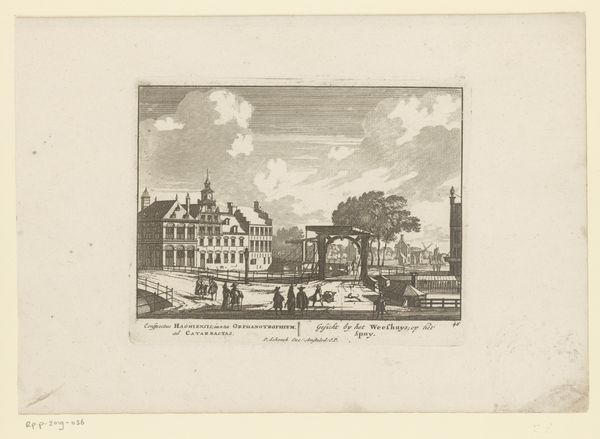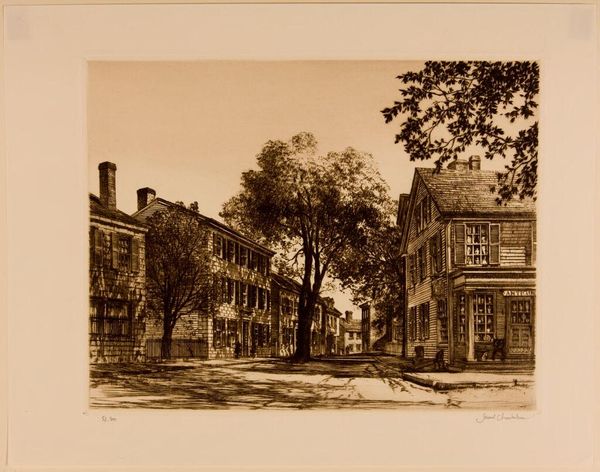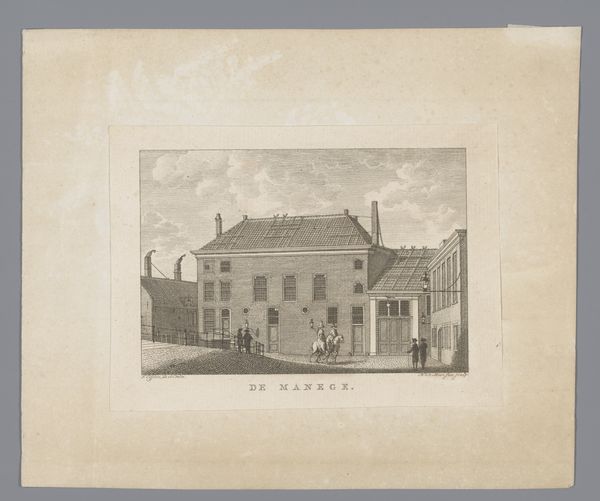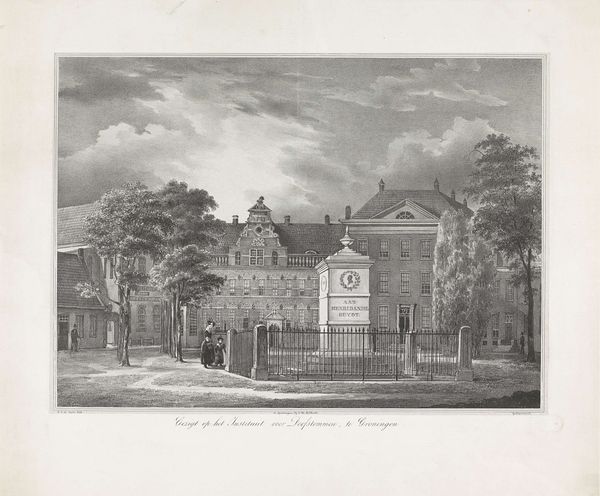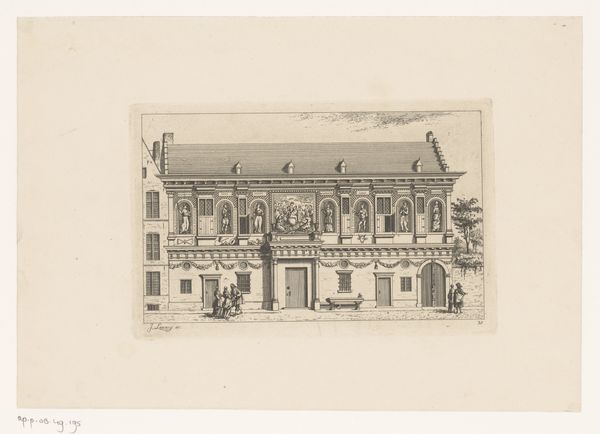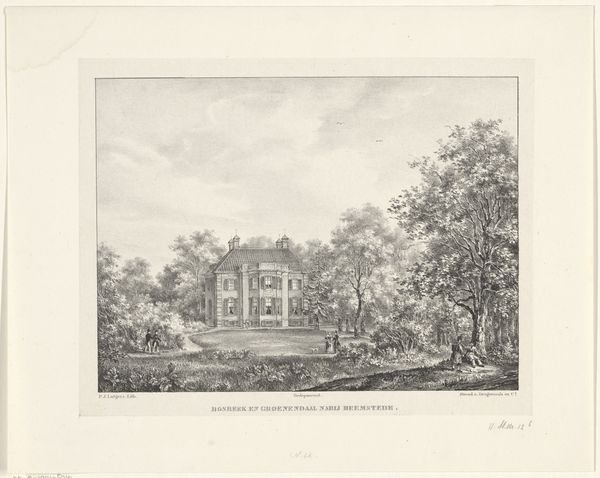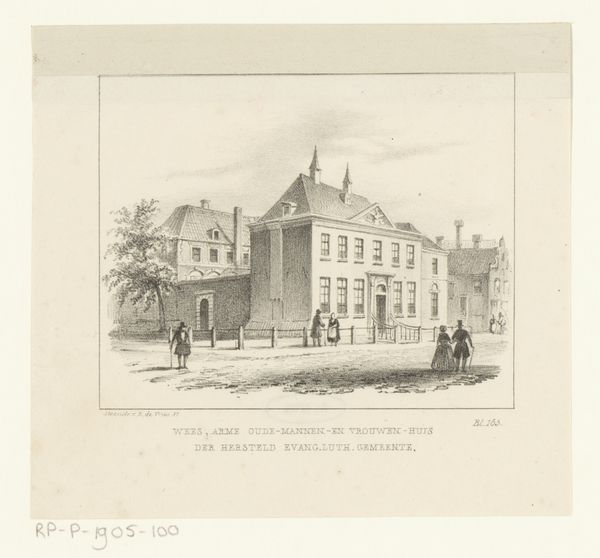
print, engraving
# print
#
cityscape
#
engraving
#
realism
Dimensions: 169 mm (height) x 203 mm (width) (plademaal)
Curator: Welcome to the Statens Museum for Kunst. We're now in front of Carl Frederik Bartsch’s print, "Collins gård i Bredgade." Created between 1833 and 1895, it’s a beautifully detailed engraving that depicts a cityscape. What are your initial thoughts? Editor: It's very calm. The texture created by the engraving technique is beautiful, evoking a still moment, and also seems meticulously crafted. The people seem suspended, caught in the act of going somewhere. Curator: It's interesting you say "calm," given the print was made during a period of immense urban and social change in Copenhagen. Prints like these, sold and collected, served as visual records, creating a sense of collective identity amidst that flux. Editor: So it is not simply documentary, but has a larger socio-cultural implication... How were buildings such as this one used? And why make the buildings a focus of such a scene, not a portrait, say, of the occupants or citizens of the locale? Curator: Bredgade was a street that housed many aristocratic homes, and Collins Gård would have represented an established wealthy identity. Prints of significant buildings were highly sought after as status symbols. Editor: I wonder about the inclusion and position of those figures in the foreground. A lone person to the far left is cut off by the frame; a trio is in the opposite corner. The scale difference makes me wonder about social position and relationships—and what they tell us about Copenhagen at the time. Curator: It’s tempting to analyze these figures through a lens of social hierarchy. In 19th century Denmark, clear class distinctions were visualized everywhere. Do the engraver’s details either uphold or disrupt it? Editor: It is a moment of both performance and social reality. There's also a subtle tension. This moment in Bredgade becomes more than a simple, quiet scene—it’s an index of that era’s urban identity and, perhaps, unspoken social codes. It really illustrates art's unique power in documenting evolving communities. Curator: Indeed. And a quiet reminder of how much can be gleaned from even the seemingly simplest urban scene.
Comments
No comments
Be the first to comment and join the conversation on the ultimate creative platform.
